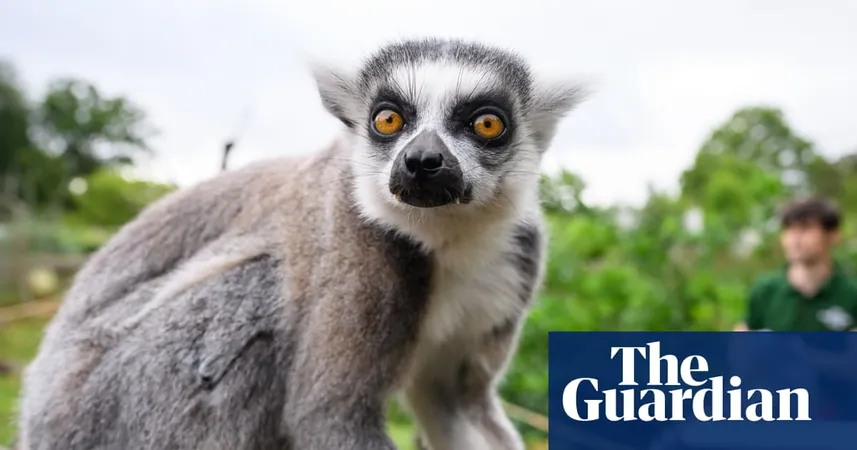
Unlocking the Secret: Do Long Thumbs Mean Bigger Brains in Primates?
2025-08-27
Author: Noah
The Surprising Link Between Thumb Length and Brain Size
It turns out, having long thumbs might be more than just a quirky trait—it could indicate a bigger brain! Researchers have discovered a fascinating connection between thumb length and brain size in primates, suggesting that the evolution of manual dexterity may have gone hand in hand with increased intelligence.
An Evolutionary Advantage?
Imagine an ancient primate becoming smarter, learning to plan actions, and realizing the best ways to use its hands. Dr. Joanna Baker from the University of Reading leads the research, proposing that those with longer thumbs had a better grip and manipulation abilities, ultimately giving them an edge in survival and success.
The Power of Opposable Thumbs
Large brains and the ability to skillfully use our hands have both been pivotal in human evolution. Opposable thumbs have enabled us to grip and use tools effectively. However, the role of varying thumb lengths among other primates in tool usage has sparked deeper questions.
Research Shows Strong Correlation
To dive deeper, Baker and her team examined thumb lengths and estimated brain mass across 94 primate species, including our ancient relatives and lemurs. The findings, published in Communications Biology, revealed a surprising pattern: species with longer thumbs generally also have larger brains relative to their body size.
Humans Are Not Alone in This Trait
Surprisingly, once brain size is factored in, humans and their closest relatives fit right in with the primate trend. 'Longer thumbs typically correspond with larger brains,' Baker explained. While our thumbs and brains are indeed exceptionally large, the relationship holds true across various primate species.
Anomaly: A. sediba's Unique Thumb
The only outlier was the early hominin A. sediba, which showcased a thumb longer than expected even after adjusting for brain size, likely due to its lifestyle that combined life in trees and on the ground.
Neocortex: The Brain's Secret Weapon
Further investigation spotlighted the neocortex, a brain region critical for cognition and action planning, which was notably larger in primates boasting longer thumbs. This was unexpected, as researchers had assumed other brain regions, like the cerebellum tied to motor control, would play a more significant role.
Complexity of Tool Use
Interestingly, while thumb length and brain size correlate across species, it does not necessarily predict tool use. Baker noted, 'We believed there might be a marked change in hominins that didn’t materialize,' highlighting the complexities of how manual dexterity evolved.
A Call for Further Research
Dr. Fotios Alexandros Karakostis from the University of Tübingen, who was not involved in the study, emphasized that a comprehensive understanding of human-like dexterity and cognitive evolution requires considering additional hand traits and more in-depth studies of neural mechanisms.









 Brasil (PT)
Brasil (PT)
 Canada (EN)
Canada (EN)
 Chile (ES)
Chile (ES)
 Česko (CS)
Česko (CS)
 대한민국 (KO)
대한민국 (KO)
 España (ES)
España (ES)
 France (FR)
France (FR)
 Hong Kong (EN)
Hong Kong (EN)
 Italia (IT)
Italia (IT)
 日本 (JA)
日本 (JA)
 Magyarország (HU)
Magyarország (HU)
 Norge (NO)
Norge (NO)
 Polska (PL)
Polska (PL)
 Schweiz (DE)
Schweiz (DE)
 Singapore (EN)
Singapore (EN)
 Sverige (SV)
Sverige (SV)
 Suomi (FI)
Suomi (FI)
 Türkiye (TR)
Türkiye (TR)
 الإمارات العربية المتحدة (AR)
الإمارات العربية المتحدة (AR)